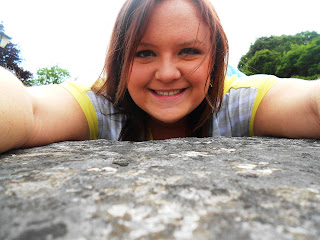 |
| Chester Beatty |

 CHESTER BEATTY LIBRARY
CHESTER BEATTY LIBRARYOur first stop in Dubin was the Chester Beatty Library! This is the only museum in Ireland to win "European Museum of the year". The collections range from countries accross Asia, the middle East, North Africa, and Europe. It consists of Manuscripts, miniature paintings, prints, drawings, rare books, and decorative arts of the collecting activities of Sir Alfred Chester Beatty (1875-1968). We werent allowed to take pictures of the exhibit but we took a nice informational tour The Library is a public charitable trust est under the will of Mr Beatty, which was granted probate in 1969. The library is the owndership of a Board or trustees who hold it for the use and benefit of the public.
Trinity College
 NEXT STOP.... Trinity College! The college builds on its four-hundred-year-old tradition of scholarship to confirm its position as one of the great universities of the world, providing a liberal environment where independence of thought is highly valued and where staff and students are nurtured as individuals and are encouraged to achieve their full potential. The college was created by royal charter in 1592, at which point Dublin Corp provided suitable site, former Priory of All Hallows. Its foundation came at a time when many universities weer being established across western Europe int he belief that they would give prestige to the state in which they were located and that their graduated, clergy for the most part, would perform vital service as a civil administrators.
NEXT STOP.... Trinity College! The college builds on its four-hundred-year-old tradition of scholarship to confirm its position as one of the great universities of the world, providing a liberal environment where independence of thought is highly valued and where staff and students are nurtured as individuals and are encouraged to achieve their full potential. The college was created by royal charter in 1592, at which point Dublin Corp provided suitable site, former Priory of All Hallows. Its foundation came at a time when many universities weer being established across western Europe int he belief that they would give prestige to the state in which they were located and that their graduated, clergy for the most part, would perform vital service as a civil administrators.
THE OLD LIBRARY & THE BOOK OF KELLS
And finally at the end of the day we took the Old Library and Book of Kells exhibition inside of Trinity College. The exhibition places the 9th century manuscript in its historical perspective and allows the visitor to have a greater appreciation of the work. Related manuscripts are also in the show: Book of Armagh, Durrow, and the Book of Dimma. The Book of Kells is one of Ireland's treasures. The finely written, decorated manuscript of the four Gospels of the New Testament is 1200 years old. The book is incomplete. The beginning and the end have been lost, however no fewer than 340 leaves survive. They contain both writing and colour oranament, for the most part, on both sides of the folio.
The main chamber of the Old Library is the Long Room, and at 65 metres in length, it is filled with 200,000 of the library's oldest books. Build between 1712-1732 it had a flat plaster ceiling and shelving for books was on the lower level. By the 1850's the shelves had become completely full. In 1860 the room was raised to allow construction of the ceiling and upper bookcases. 48 Marble busts line the Long room; other treasures in the long room include one of the few remaining copies of the 1916 Proclamation of the Irish Republic which was read outside the General Post Office on April 24th, 1916 by Patrick Pearse at the start of the Easter Rising.
 |
| Oldest Harp in Ireland |


 |
| Snack after Trinity College tour |
 |
| Meghan and I in Long room... a little blurry |































